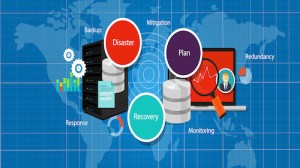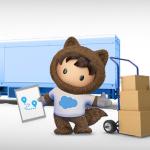A Software as a Service (SaaS) backup strategy is the act of creating copies and storing data in the cloud. Businesses are responsible for backing up their own data. They can do this manually or find a trustworthy partner to provide SaaS backup and restore services.
Data recovery is a top priority in the current climate. The rise of cloud-based services and the shift to remote working has untethered and liberated businesses around the world. A study by LogicMonitor found that 87% of global IT decision-makers agree that the COVID-19 pandemic will cause organisations to accelerate their migration to the cloud, with 74% expecting to be almost fully in the cloud within the next five years.
With this increased flexibility, agility, and visibility comes a new concern: creating a SaaS backup strategy. Keeping data safe in the cloud is crucial, so finding the right SaaS backup tools has become a growing area of interest.
Here are some things to consider when evaluating your SaaS backup strategy, as well as some best practices for data loss prevention.
Why SaaS backup?
Using SaaS takes away the worries and costs associated with having to maintain in-house infrastructure, but it also means that businesses are responsible for backing up their own data. And in an age when data is king, businesses can’t afford to get this wrong. Finding a trustworthy partner to provide SaaS backup and restore services needs to be at the top of every organisation’s list.
Is your data protected?
Whether it’s due to human error, bad code, rogue integrations, or malicious intent, data loss can happen to anyone.

Data loss can cause irreparable damage to a business and its clients, including non-compliance fines and productivity losses. So organisations need to get ahead of any potential issues before they arise. Having a SaaS backup strategy to keep data safe in the cloud is a great place to start. Having a solution that’s secure, automated, and backed up daily is even better.
Seven steps to evaluate your backup strategy
Here are some steps that organisations can take in order to create a robust SaaS backup strategy and keep their data safe in the cloud.
1. What is your Recovery Point Objective (RPO)?
How much data are you willing to lose? Remember – there’s no way to recover data that’s been changed since the last backup, so consider leveraging high-frequency backups, or at least backing up daily.
2. What is your Recovery Time Objective (RTO)?
How quickly do you need your data recovered? Cloud data protection platforms can recover your data in minutes, as opposed to the days or weeks that some out-of-the-box solutions require. Your RTO will go a long way towards determining what SaaS backup solution is right for you.
3. Does your current strategy enable you to recover data from any point in time?
The best data recovery solutions allow businesses to put their data back together exactly how it was before a problem occurred, whether that was yesterday or six months ago. In order to recover the precise data required, you need to be able to quickly compare data to historical data. Using an automated service with full daily backups is the best way to do this.
4. Are you able to recover data AND metadata?
Data recovery is great, but don’t forget to back up metadata and attachments as well. Without metadata, trying to rebuild the relationships between Salesforce data objects can be a painstaking and time-consuming process. And without the ability to maintain these relationships, you’ll only have partial restore capabilities. Try to find SaaS backup tools that can recover metadata and attachments, such as OwnBackup.
5. Does your current backup strategy meet Salesforce standards?
Here are some controls you’ll want to include:
- Role-based access controls (RBAC) for managing who can access backups
- IP whitelisting for controlling domain access
- Two-factor authentication for ensuring access is limited to authorised users
- Single sign-on for reducing threat surfaces
OwnBackup has built-in security features and has passed Salesforce security reviews.
6. Is your backup strategy automated?
SaaS backup tools should be as pain-free and user-friendly as possible. Look for dynamic solutions that offer automated backups, proactive monitoring, and first-class support. You don’t want to be stuck having to configure your backup to specific fields and objects.
7. Is your data accessible outside of your SaaS platform?
OwnBackup enables you to access your data even if Salesforce is temporarily unavailable. Being able to access information through a user-friendly, controlled interface outside of Salesforce is important, and backing up data to an S3 server presents too many access and security issues to be a good solution.
What’s your SaaS backup strategy?
Losing critical data is a nightmare for businesses, especially when data is fuelling so many companies. Coming up with a robust SaaS backup strategy will help you be better prepared for the unexpected, and using the right data recovery solution will help you stay safe and secure.
Explore over 170 data backup solutions offered on the AppExchange. Some of these apps allow you to automate backups of both your data and metadata as well as restore your data easily.
























